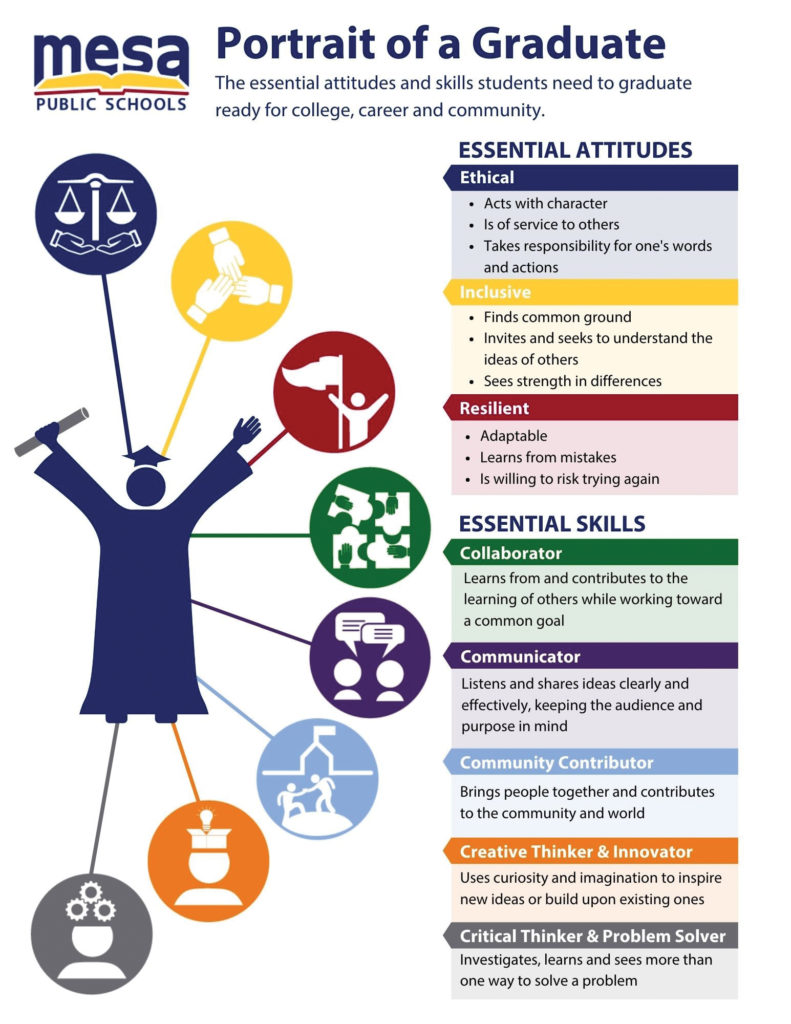Across the 200-square-mile district, Mesa Public Schools’ Promise serves as the foundation for creating equity and learning opportunities for all students.
In 2017, the Governing Board adopted the MPS Promise to ensure that every student is known by name, served by strength and need, and graduates ready for college, career and community.
Dr. Andi Fourlis, superintendent of Mesa Public Schools, shares that the Strategic Planning Process began in 2018, with the goal to answer the question: Once the Promise is fulfilled, what would a Mesa Public Schools graduate look like? For eight months the district spoke with thousands of people about their vision for the future. The community-owned plan encapsulates the collaboration between parents, students, staff and community members who gathered in forums and focus groups to share their valuable insight.
Creating Opportunity for All Students
Mesa’s Portrait of a Graduate includes three essential attitudes, which are ethical, inclusive and resilient, and a combination of high priority skills that a Portrait of a Graduate would know and be able to demonstrate. Essential attitudes provide the opportunity for students to develop the ability to find common ground, take responsibility for their words and actions, seek to understand the ideas of others, act with character, and to be adaptable and learn from their mistakes.
“We believe through the Strategic Planning Process — the aspiration of our Promise and the Portrait of a Graduate — that if we align resources, engage our community, ignite a culture of well-being, and ensure equity for all students that we will achieve college, career and community readiness,” Dr. Fourlis said.

Strategic Steps to Success
Christa Mussi is a counselor at Dobson High School. She says the work counselors do with students and their families is essential to students gaining the skills needed to be successful in high school and after. Freshman family meetings play an integral role in discussing student’s goals and four-year plans. By meeting with 100 percent of families, parents and caregivers, the counseling staff address the first piece of the strategic goal under a culture of learning.
Christa meets with families and students and on occasion determines that a student belongs in an honors class. She uses the time as an opportunity to discuss the value of the honors class, to support the student with the move, build course rigor and connect families to additional support and resources.
“It’s a great tool to ensure equity for all students,” Christa said. “As counselors, we work to establish a sense of community, bring families into our schools, and build relationships, so moving forward they know exactly how to reach out for help.”
Providing a Culture of Learning and Well-being
Heather Sharpe is a National Board Certified Teacher at Mountain View High School. She shares that in her art classroom that she teaches students to be resilient by learning from their mistakes. The digital age makes it challenging to teach students how to fail because they are used to things being immediately perfect.
“There is no possible way that I can introduce everything that there is about the world of art but I can teach my students how to approach it, to edit, and think for themselves,” Heather said. “The essential attitudes and skills in a Portrait of a Graduate are things that will build their character and add to a community, and I am more concerned about ensuring my students are good people rather than being good at art.”
Heather is most proud of her students when she watches them build relationships with their classmates and collaborate and problem solve, because these are the tools and skills needed for college, career and community.

